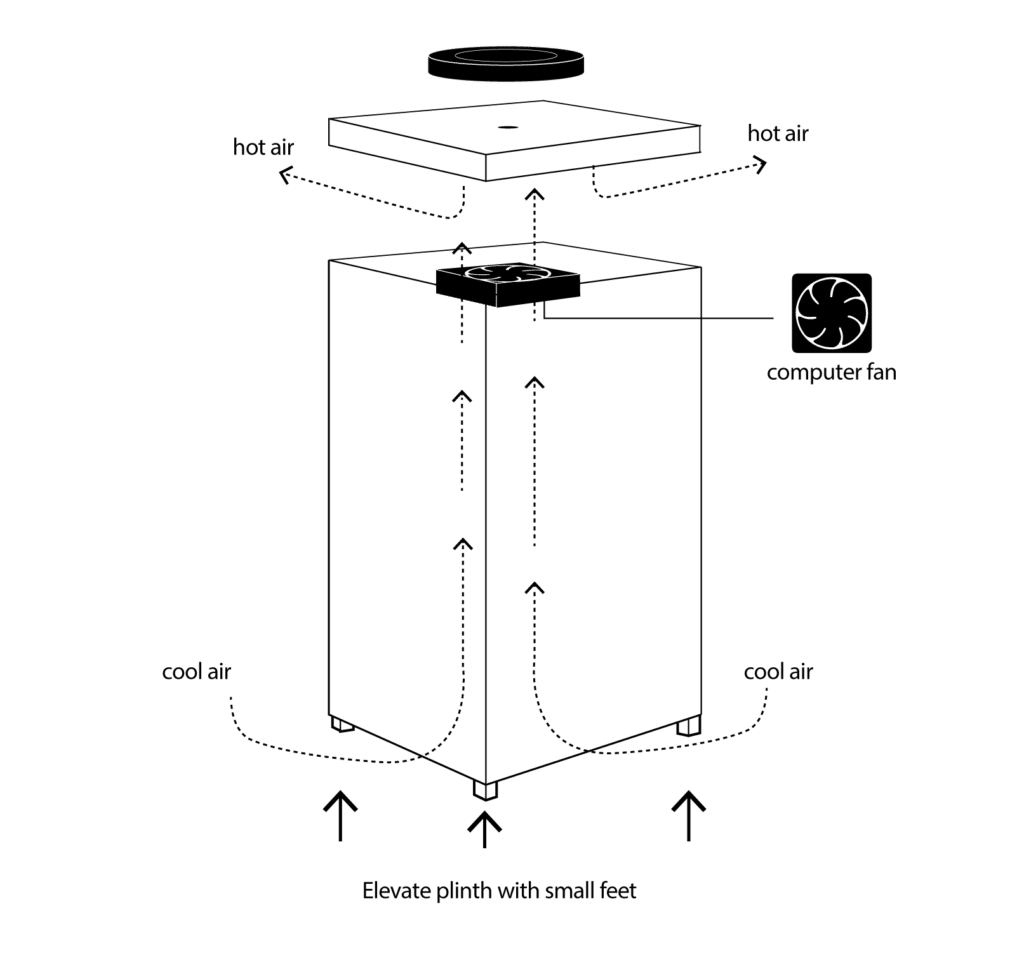Hiding the tech
Hiding the tech
Hiding the Unit
The more you can isolate your product from the world around us, the more attention it demands. This is why levitating your product is the ultimate way making an impact on your target audience. It gets even better when the technology remains completely hidden. But in order to do this, there are some things to take into account.
Covering the base
The base can be covered with anything that doesn’t stick to magnets. To hide the base you can use wood, plastic or aluminium for example. However, our systems use an optical sensor to detect the position of the floating disk. This sensor can’t be covered. So any material you use to cover the base has to have a hole for the sensor to see through.
There are some exceptions where you don’t need a hole in the top cover.
You can use a transparent material like normal glass, or transparent plastic. You can even use a mirror and remove the backing where the sensor is going to be (so it is just normal glass on that spot). Another way to completely cover the base is to use a special type of infrared transmitting Plexiglass. It only comes in glossy black. It can be laser cut in any shape. There is one rule to the exceptions above. The material thickness can’t exceed 3mm. This is because the signals to the sensor will otherwise distort.

Covering the floating carrier
The carrier can also be covered, painted, hidden, enclosed, etc. as long as the material doesn’t stick to magnets. On the underside, in the middle of the carrier there is a reflective spot (tracking point). Around this spot there is an anti-reflective area. When hiding the carrier, it is important that this area + spot isn’t covered. Otherwise the optical sensor in the base can’t track the floating carrier.
Ventilation
Like any electrical device a levitation module can generate heat when working hard. When exceeding a certain core temperature, our units shut down automatically as a safety measure; resulting in the floating carrier falling. Therefore it is extra important to have a ventilation plan in place when hiding the base module.
The smaller modules lose their heat through a metal bottom plate. This plate attracts heat from the electronics and passes it on to the air or the surface it is sitting on. The bigger modules have air intakes and exhausts, enforced by fans. They suck up the cool air in one place and blow out the hot air in the other. In all cases it is important that the hot air can’t build up in the same space the unit is in.
There are many ways to counter this, but the important things are:
– Try not to stretch the limits of the module’s performance (this will create heat).
– When embedding the base, make sure the enclosure has active ventilation (a fan).
– A bottom – top airflow is preferable.
– Make sure the hot air and cool air don’t mix by separating the air intake and exhaust in your housing design.
To help you make the right design choices, we’ve compiled a short manual on hiding the technology which can be found in this link or on our downloads page under resources.
If you’re not sure about your design, or if you have any more questions; you can always contact us directly for support.